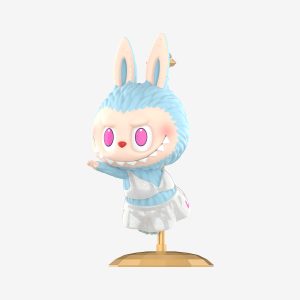The world of streetwear has long been associated with bold self-expression, cultural storytelling, and a certain rebellious edge. In recent years, https://labubuco.de/ however, a fascinating player has emerged in the German fashion scene: Labubu, a quirky character born from the world of collectible art toys. By merging Labubu’s whimsical design language with the structured and sophisticated undertones of German streetwear, a new fashion movement has taken root, redefining how playfulness and high style can coexist.
The Origins of Labubu and Its Cultural Influence
Labubu was originally introduced by Kasing Lung, a celebrated Hong Kong illustrator, and was further popularized through collectible figurines by POP MART. Its mischievous smile, oversized ears, and childlike yet slightly eerie charm make it an instantly recognizable figure. While it started in the realm of toys and collectibles, Labubu quickly transcended its origins to become a symbol of creativity, nostalgia, and individuality.
In Germany, where the intersection of design innovation and subcultural aesthetics is highly valued, Labubu found a natural audience. The character represents a bridge between pop culture collectibles and fashion-forward design, creating a subversive twist in the often minimalist German fashion narrative.
German Streetwear: Tradition Meets Innovation
Germany is not always the first country associated with streetwear, yet its scene has steadily risen to global relevance. Berlin, Cologne, and Hamburg have become hubs for underground fashion, where streetwear merges with art, music, and nightlife. Unlike the flashy, logo-heavy trends seen elsewhere, German streetwear often emphasizes minimalism, functionality, and sustainability.
What sets Germany apart is its ability to mix practical design with avant-garde elements, producing streetwear that is as intellectual as it is stylish. By introducing Labubu into this environment, a new wave of fashion is emerging—one that marries playfulness with sophistication.
Labubu as a Style Icon in Germany
Labubu’s rise in Germany is not accidental; it reflects a deeper shift in the way people express themselves through fashion. For younger generations, streetwear is not just clothing—it is identity. Incorporating Labubu into apparel allows wearers to merge nostalgia, individuality, and contemporary coolness.
From oversized hoodies adorned with Labubu’s mischievous grin to sleek accessories featuring its silhouette, the character has become a fashion staple. German youth, in particular, embrace Labubu as both a cultural emblem and a statement of belonging to a global, playful, and inclusive community.
The Collaboration of Art Toys and Streetwear Brands
Collaborations are at the heart of modern streetwear, and Labubu partnerships with German designers have only reinforced its cult status. Limited-edition drops, exclusive capsule collections, and pop-up events create hype-driven demand, making these items not only desirable but also valuable as collectibles.
By merging art toy culture with wearable fashion, German streetwear brands are rewriting the rules. What was once dismissed as childish or niche now commands respect as an elevated form of cultural currency, blending seamlessly into wardrobes that value both creativity and exclusivity.
Playfulness as the New Luxury
In a world where luxury fashion can sometimes feel detached and elitist, Labubu injects a sense of joy, humor, and imagination into the German streetwear landscape. This aligns with a broader global movement where playful fashion is being embraced as the new luxury.
Designers are moving away from sterile perfection toward garments that feel alive, personal, and even imperfect. Labubu embodies this shift, reminding us that true style is not about conformity but about daring to stand out with authenticity and charm.
Streetwear as a Canvas for Cultural Identity
German streetwear is deeply intertwined with urban culture, from electronic music to underground art. Labubu adds another layer of identity, allowing wearers to signal not just fashion awareness but also cultural literacy. By wearing Labubu-inspired clothing, individuals express a connection to creativity, global community, and playful rebellion.
This phenomenon echoes how Japanese kawaii culture influenced global fashion decades earlier, yet Germany’s interpretation is uniquely its own: bold, experimental, and rooted in the nation’s love for design and structure.
Sustainability and Ethical Fashion with Labubu
Another defining feature of German streetwear is its strong commitment to sustainability. Brands often focus on ethically sourced fabrics, recycled materials, and fair production practices. When Labubu enters this ecosystem, it does so not only as an aesthetic addition but as a sustainable cultural symbol.
Collections often highlight limited production runs to reduce waste, while the collectible nature of Labubu-infused apparel encourages long-term value, countering the fast-fashion cycle. This makes Labubu not just stylish but also responsible, aligning with the values of the modern German fashion consumer.
Labubu in Everyday German Fashion
The presence of Labubu in German streetwear goes beyond niche fashion shows or online hype. Walk through the streets of Berlin’s Kreuzberg or Hamburg’s Sternschanze, and you will see how seamlessly Labubu fits into everyday wear.
Whether paired with chunky sneakers, tailored jackets, or minimalist denim, Labubu pieces adapt to different personal styles while still making a distinct statement. This versatility is key to its widespread appeal—it works as well on the streets as it does in art galleries, music festivals, or campus settings.
The Future of Labubu and German Streetwear
The fusion of Labubu and German streetwear is not a fleeting trend; it signals a lasting shift in the cultural fabric of fashion. As global demand for playful, expressive, and sustainable fashion grows, Germany is positioning itself at the forefront of this movement.
We anticipate further collaborations between German streetwear brands, international artists, and Labubu’s creators, expanding its influence not just across Europe but worldwide. This blend of art, fashion, and subculture is paving the way for a new era where individuality and imagination dominate the streets.
Conclusion
Labubu’s playful charm, when combined Labubu Bag with the intellectual and sustainable backbone of German streetwear, creates a movement that is both stylish and culturally significant. It represents more than just clothing; it is a cultural dialogue between art toys, fashion, and youth identity. In Germany, this blend has transformed Labubu from a collectible figure into a symbol of modern streetwear culture.
As the boundaries between fashion, art, and lifestyle continue to blur, Labubu and German streetwear will remain at the forefront of this global evolution. The future of streetwear is not just about exclusivity or logos—it is about imagination, inclusivity, and playful rebellion.


